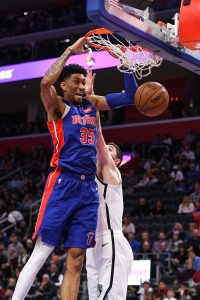After playing in five consecutive NBA Finals, the Warriors bottomed out in 2019/20, losing Kevin Durant, Andre Iguodala, and Shaun Livingston last offseason and then having stars Stephen Curry and Klay Thompson miss essentially the entire season with injuries.
The good news? Curry and Thompson should be fully healthy for ’20/21 and the Warriors’ disastrous season would give them the league’s best lottery odds if the regular season is over.
Under the NBA’s new lottery format, the worst team in the league only has a 14% chance of landing the first overall pick, so the odds are against the Warriors winning the lottery. But what if they do? What would Golden State do with the pick in that situation?
Faced with that question during a SportsCenter appearance this week, ESPN draft guru Mike Schmitz (video link) suggested that the 2020 draft has long been considered “needs-based,” since there’s no one transcendent prospect that stands head and shoulders above the rest. With that in mind, Schmitz says big man James Wiseman is a player who would fit the Warriors’ roster, suggesting the club could use that sort of rim-runner and lob-catcher on offense and rim-protector on defense.
However, Schmitz notes that if he were making the Warriors’ pick, he’d lean toward guard LaMelo Ball, whom he views as the most talented prospect in the 2020 class. As Schmitz explains, Curry isn’t a point guard who always needs the ball in his hands, so he could play alongside Ball. And Golden State would be an ideal spot for the new owner of the Illawarra Hawks to develop, Schmitz adds.
While Wiseman and Ball could both be fits, Connor Letourneau of The San Francisco Chronicle has heard from multiple league sources that the Warriors aren’t believed to be particularly high on either prospect.
“I think they’d only take one of those two if they were trading down in the draft and taking them for another team,” one source told The Chronicle.
According to Letourneau, shooting guard Anthony Edwards appears likely to be Golden State’s top choice if the team lands – and keeps – the No. 1 overall pick. But the Warriors would be open to trading the first overall selection if they do win the lottery, Letourneau notes.
If the Dubs don’t get the No. 1 pick, or decide to trade down, one target might be EuroLeague forward Deni Avdija. One league source tells The Chronicle that there are teams who believe Golden State would have Avdija as high as No. 2 on its draft board, behind only Edwards. Meanwhile, Letourneau also hears that the Warriors may have guard Tyrese Haliburton higher on their board than Ball.
Given all the options the Warriors would have if they win the lottery, we want to know what you think. Which prospect do you think would be the best target for Golden State with the No. 1 pick? Or do you think the club would be better off trading that pick in the hopes of acquiring more assets or an impact veteran?
Vote in our poll, then head to the comment section below to weigh in with your thoughts!
Trade Rumors app users, click here to vote.

